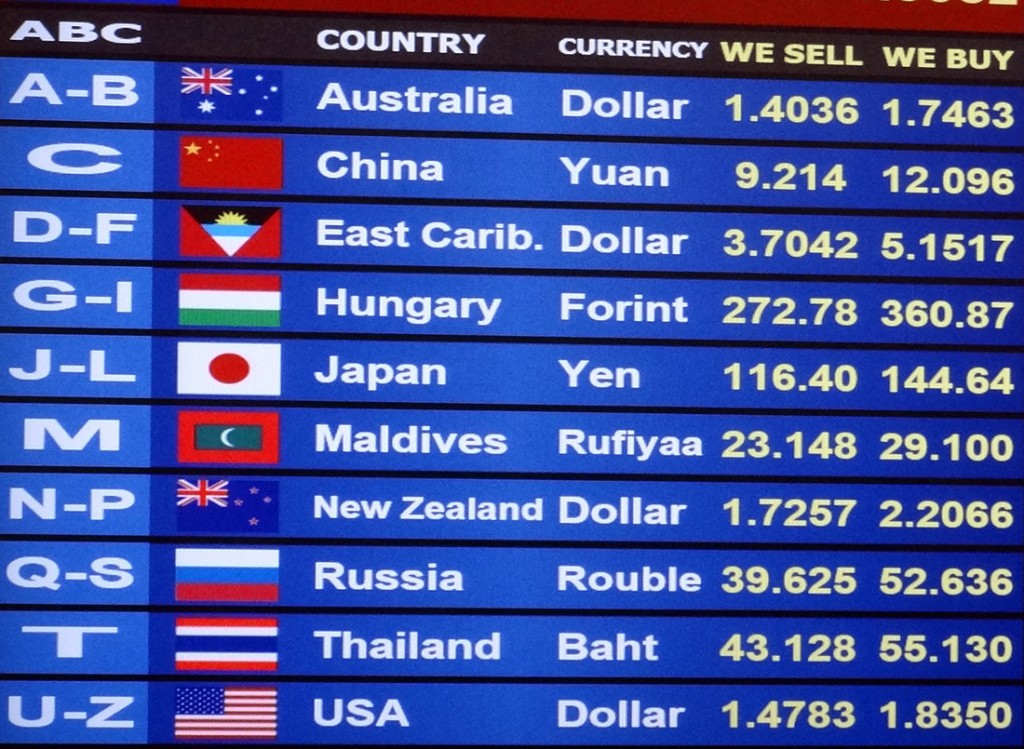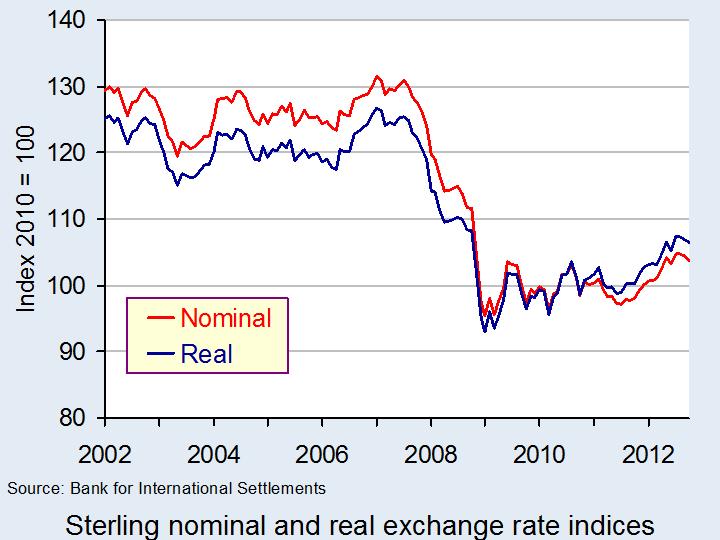 The UK is an island-economy. Therefore, trade is a crucial determinant of our economic performance. The competitiveness of our exports, in part, is affected by the exchange rate. Floating exchange rates are notoriously volatile. However, since the autumn of 2007 we have observed a significant depreciation of the UK exchange rate. In other words the number of units of many foreign currencies to the British pound has fallen. A depreciation helps to make our exports more competitive abroad. We detail the extent of this depreciation and any signs of a reversal in this pattern.
The UK is an island-economy. Therefore, trade is a crucial determinant of our economic performance. The competitiveness of our exports, in part, is affected by the exchange rate. Floating exchange rates are notoriously volatile. However, since the autumn of 2007 we have observed a significant depreciation of the UK exchange rate. In other words the number of units of many foreign currencies to the British pound has fallen. A depreciation helps to make our exports more competitive abroad. We detail the extent of this depreciation and any signs of a reversal in this pattern.
Rather than look at the British pound (or any currency) against the many foreign currencies separately we can look at the average exchange rate against a whole bundle of currencies. The average rate is calculated by weighting the individual exchange rates by the amount of trade between Britain and the other countries. This trade-weighted exchange rate is known as the effective exchange rate.
In analysing the competitiveness of the exchange rate, we can go one step further and adjust for the terms of trade. This means that we adjust for the average price of our exports relative to the average price of those goods we import. Therefore, as well as the nominal (actual) effective exchange rate we can calculate a real effective exchange rate. If the average price of our exports rises relative to the average price of imports, the real effective exchange rate rises relative to the nominal rate. It means that we are able to obtain a larger volume of imports from selling a given volume of exports.
 The chart shows the nominal (actual) and real effective exchange rate for the British pound since 2002. The chart shows clearly how from the autumn of 2007 the effective exchange rate both in nominal and real terms began to fall sharply. Over the period from September 2007 to January 2009 the nominal effective exchange rate fell by 26 per cent. After adjusting for the relative price of exports to imports, we find the real effective exchange rate fell by 24 per cent. In other words, the British pound depreciated by close to one-quarter in just 16 months.
The chart shows the nominal (actual) and real effective exchange rate for the British pound since 2002. The chart shows clearly how from the autumn of 2007 the effective exchange rate both in nominal and real terms began to fall sharply. Over the period from September 2007 to January 2009 the nominal effective exchange rate fell by 26 per cent. After adjusting for the relative price of exports to imports, we find the real effective exchange rate fell by 24 per cent. In other words, the British pound depreciated by close to one-quarter in just 16 months.
If we move the clock forward, we observe a mild appreciation of the British pound since July 2011. In nominal terms, the effective exchange rate has appreciated by 6.8 per cent while in real terms it has appreciated by 7.8 per cent. Nonetheless, if we compare September 2007 with October 2012, we find that the nominal effective exchange rate for the British pound is 19 per cent lower while the real effective exchange rate is approximately 13 per cent lower. This still constitutes a major competitive boost for our exporters.
Data
BIS effective exchange rate indices Bank for International Settlements
Articles
Sterling gains as eurozone weakness prevails Reuters UK, Phillip Baillie (7/12/12)
Pound steady after Autumn Statement Financial Times, Alice Ross (5/12/12)
Sterling at risk after triple-A warning, outlook negative Reuters UK, Phillip Baillie (6/12/12)
- Explain how the foreign demand for goods and assets generates a demand for British pounds. How will this demand be affected by the foreign currency price of the British pound, i.e. the number of foreign currency units per £1?
- Explain how the demand by British residents for foreign goods and assets generates a supply of British pounds. How will this supply be affected by the foreign currency price of the British pound, i.e. the number of foreign currency units per £1?
- What factors are likely to shift the demand and supply curves for British pounds on the foreign exchange markets?
- Illustrate the effect of a decrease in the demand for British goods and assets on the exchange rate (i.e. the foreign currency price of the British pound) using a demand-supply diagram.
- What is the difference between a nominal and a real effective exchange rate? Which of these is a better indicator of the competitiveness of our country’s exports?